Matcha Buns with Cheese is my adaptation from the well-loved Matcha Buns with red bean paste fillings. It is a popular and modern variation of Japanese bread or pan. Besides, Japanese pan or bread has a distinctive and complex chronicle. Emerging eventually to develop into a crucial component of the Japanese diet. Moreover, Japan’s flourishing “bread ethos” came with it many different varieties of exclusive, delightful, sweet or savoury breads in Japan.
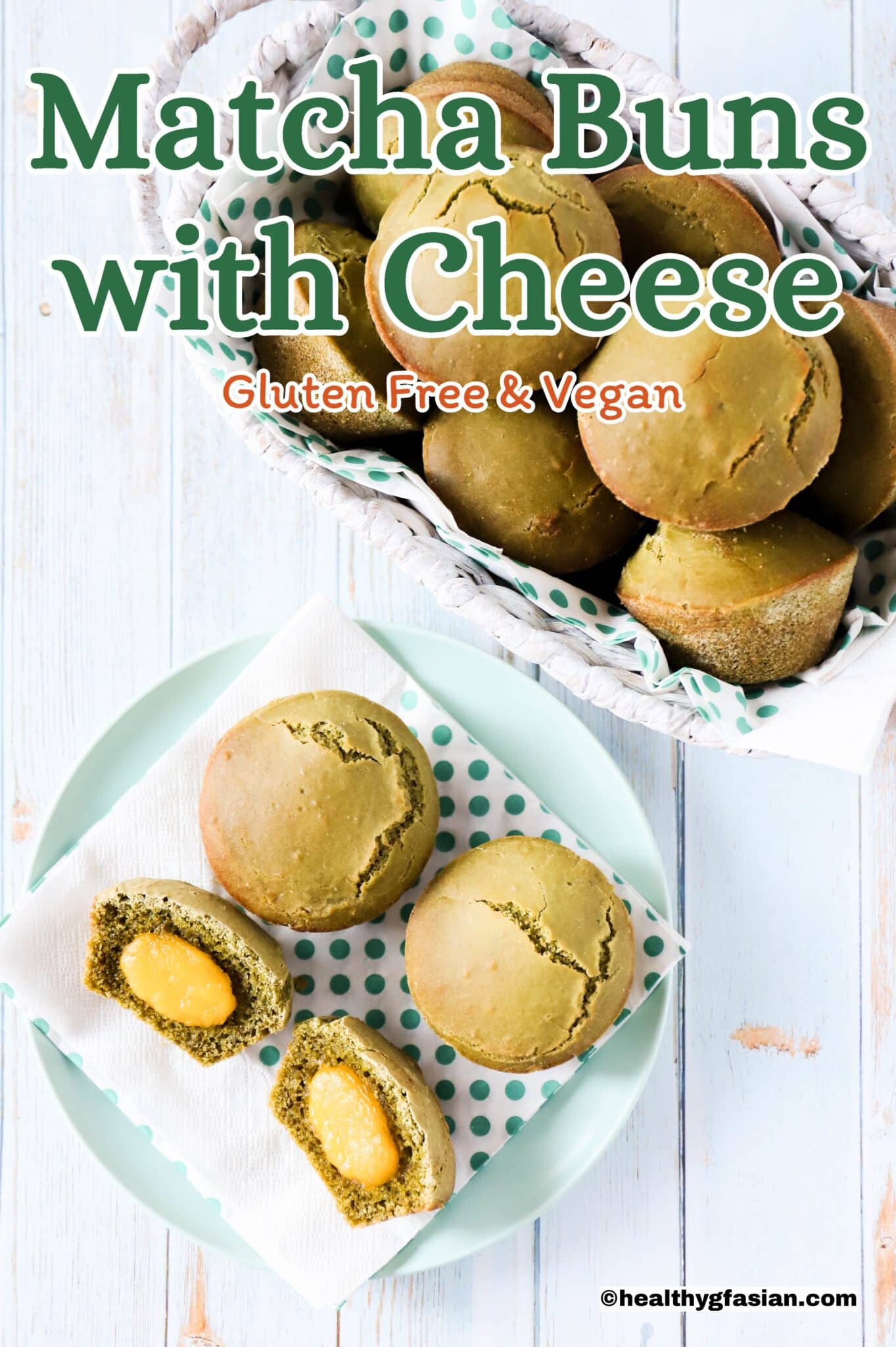
Gluten Free Matcha Buns
For my gluten free Matcha Buns with Cheese recipe that gives soft and fluffy matcha buns. I have used vegan cheese as the bun fillings. Likewise, I used My Life Bio Cheese (original or cheddar flavour), vegan cheese brand products made from coconut oil. You can purchase them from both Coles and Woolworths in Australia.
Also, the pairing of Matcha Buns with Cheese is a perfect flavour combination for these soft and fluffy buns. Nonetheless, this Matcha Buns with Cheese recipe is not only gluten free. But also vegan, dairy free, egg free, nut free, corn free and refined sugar free.
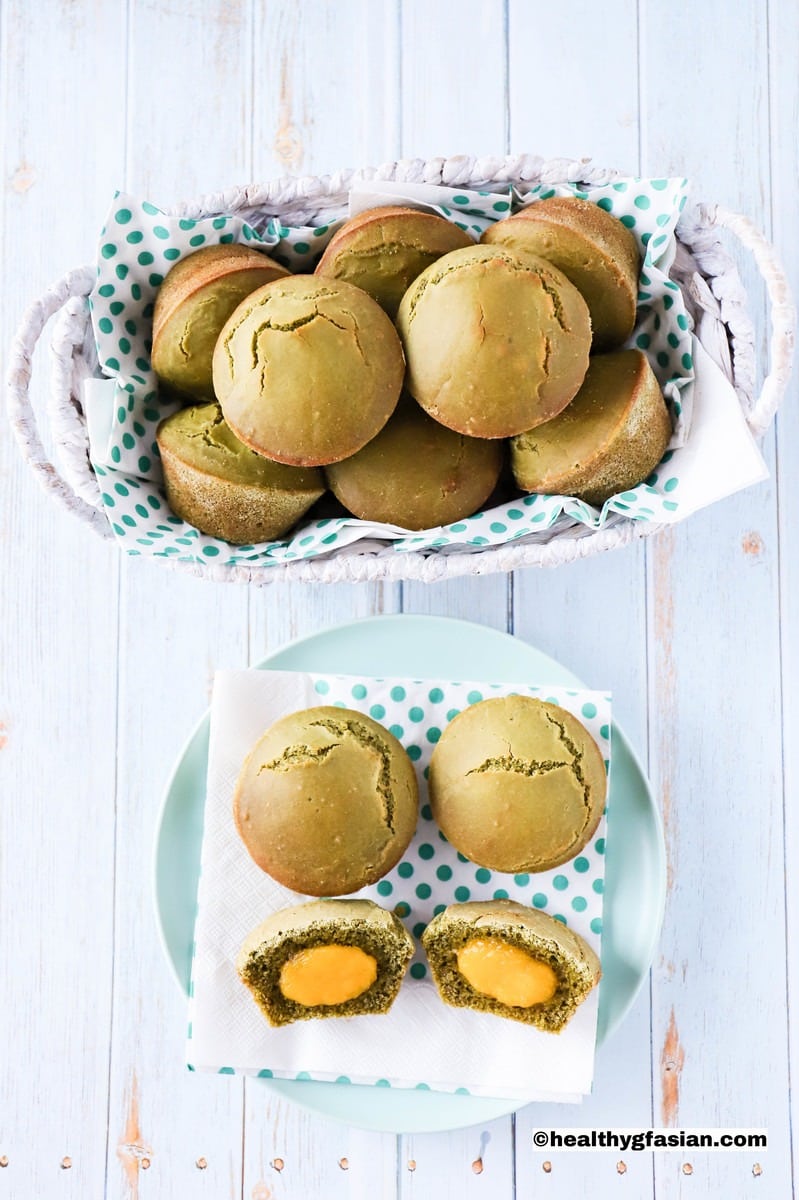
The history of Japanese Bread Culture
Portuguese traders and missionaries introduced bread into Japan in 1543. However, consumption of bread stopped when Japan famously closed its borders to foreigners in 1635. Japan became isolated from the rest of the world for more than two hundred years. During Japan’s swift industrialization in the Meiji era (1868-1912), there was an upsurge of westernization. Japanese bakers started to bake bread for the foreign nationals who live in Japan. But bread did not really become a local staple just yet.
How Japanese bread became a regular food staple
Japanese started to manufacture bread in large amounts during the Opium War in 1840. And they gave these bread as handy battle food portion for soldiers. The culture of bread making and consumption took off after World War II due to food shortages. The Japanese modified the bread to local tastes and made them much softer than the Western versions.
In addition, they used their favourite desserts fillings for the buns. Bread became regular staples for snacks, breakfasts, tea breaks and standard school lunches. The Japanese use the term pan for bread adapted from Portuguese pão.
Creation of Japanese Read Beans Paste Buns
The distinctive variety of Japanese snack bread began at the famous Kimuraya bakery in Tokyo in 1874. A former samurai named Kimura Yasubē and his son started the bakery in 1869. Similarly, they created their celebrated Japanese anpan, a sweet red beans paste filled bread bun.
Today, the Kimuraya bakery is still located in Tokyo’s Ginza district. Likewise, it also has its own café, grill and restaurant onsite. They make these Japanese bread with yeast from sake. Replacing traditional wheat, thus providing Japanese bread with a unique taste.
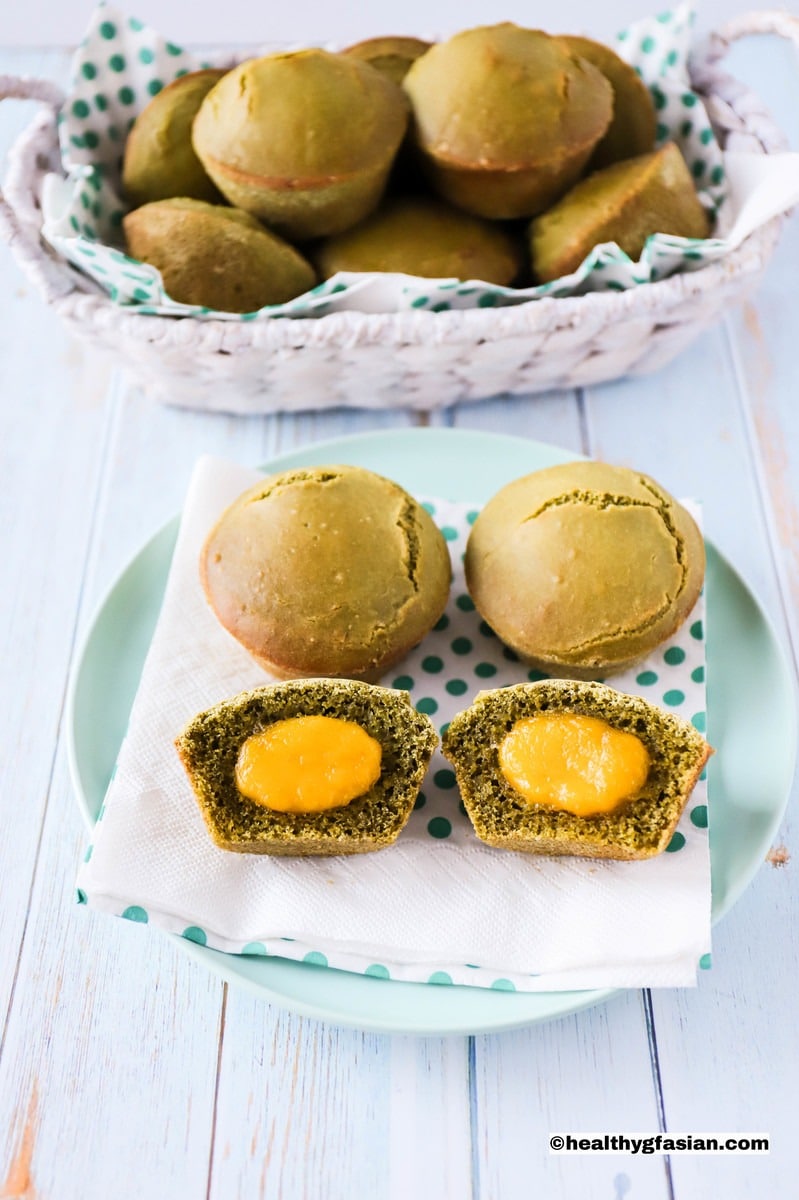
Bread in Japan Today
Consumption of rice is an important part of Japan’s ethnic heritage. But bread or pan is very much embraced as a crucial part of its national diet nowadays. During 2011, Japanese consumption of bread exceeded rice and has raised many eye brows in Japan. There are currently more than 10,000 Japanese bread shop or or panya-san in the country alone.
Today, Japanese pack their bakery shelves with a wide variety of soft buns. Not only the sweet classic anpan and square white bread called shokupan. But also chocolate croissants, strawberry danish, creamy muffins. Akin to cupcake delights to savoury bread like cheese bread, curry pan (karepan), thick mayonnaise sandwiches, sausage pan (soseiji pan). As well as the foremost Tonkatsu sando, a pork sandwich with deep-fried crumbed pork cutlet. Furthermore, this pork sandwich is mouth watering when served on two slices of square white bread with some mustard.
Types of Popular Japanese Bread Buns
Other popular bread buns are the oval shape or leaf shape Jam pan. Cream pan, a bun filled with smooth custard cream. Melon pan created by coating a standard sweet bun with cookie dough and then baked. Resulting in a crispy and sugary top with zigzag pattern that looks like cantaloupe skin and a soft interior bun.
In addition, Cornet (corune), a sweet roll with a unique cone shape. They fill these rolls most commonly with whipped cream, custard or chocolate. Shu kurimu (choux cream), or Japanese cream puffs, a favourite French dessert. As well as the yakisoba pan essentially just a hot dog bun with fried yakisoba noodles mixed inside the bun. Some specialty bread shops also sell fantastic bagels and German-style brown and nut breads.
Spread of Japanese Bread Overseas
Japanese bread culture has achieved success overseas, especially to nearby Asian countries for a long time. Many Japanese style bread shops have also made its way to numerous Western countries especially in Chinatown for many years. Japan has quite a number of world-class bakers. Moreover, many potential bread makers from Asia will study Japanese baking techniques in Japan. Instead of travelling further away to countries like Europe.
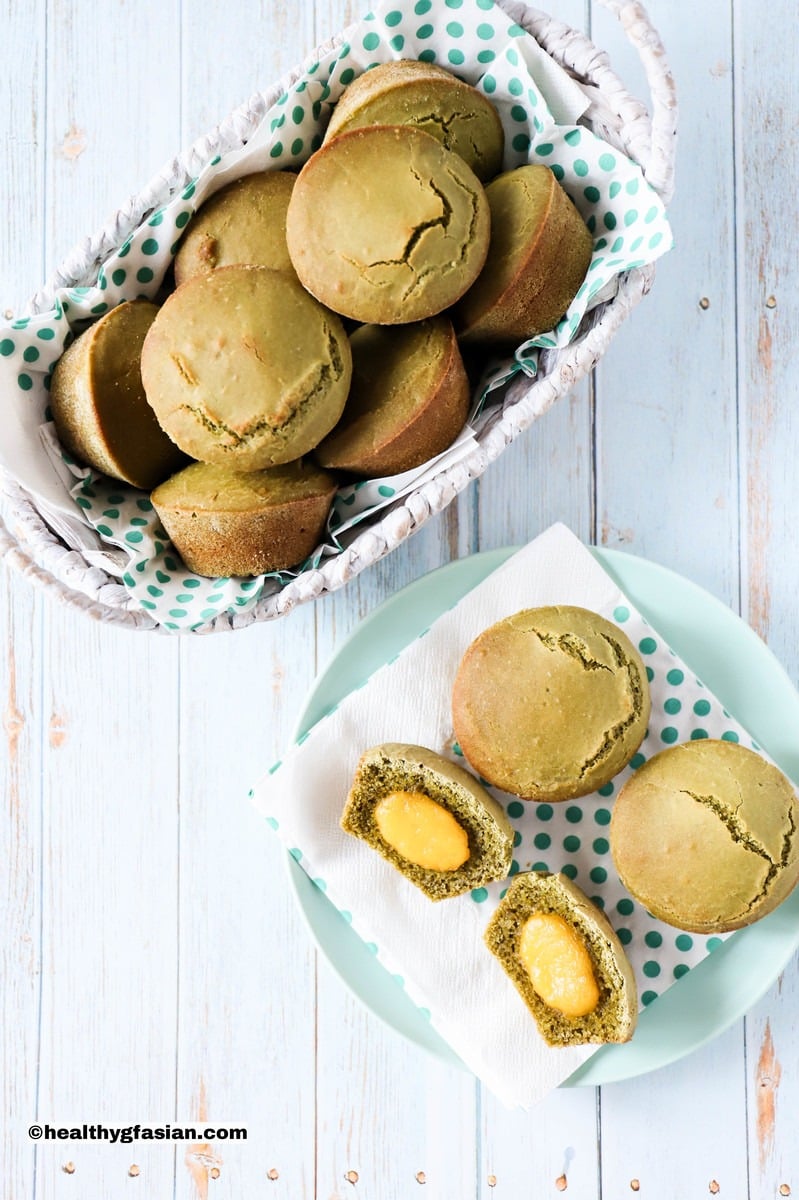
Food Intolerance and Allergy in Japan
The snowballing of food allergy and gluten intolerance worldwide is rising. Particularly in developed nations and Japan is not an exception. As the consumption of wheat increases, wheat allergy and gluten intolerance have also become more prevalent in the Japanese population. On the whole the most common types of food allergy for children in Japan are egg, dairy milk and wheat. Growing trends of food allergy in other food items are fruits, peanuts and sesame. The top 7 food allergens in Japan are: crab, prawns, wheat, buckwheat, eggs, dairy milk and peanuts.
Why are GMO crops so problematic?
Because many farmers use genetically modified wheat at present, they created many problems for both human and animal consumptions. Genetically modified organism (GMO) crops include wheat, corn, soybean, canola, cotton, sugar beet and alfalfa seeds. They modified these wheat as glyphosate-resistant (regulary called Roundup Ready. They genetically engineered these seeds to be resistant to Roundup, a popular herbicide manufactured by Monsanto).
Equally, they contaminated organic wheat fields with Monsanto’s GMO seeds dispersed from other farmers’ fields. Japan has taken steps to stop the supply of wheat from the United States. Because of the potential health risks caused by these GMO wheat. Reference: Connealy, L. E. (2013). Why the rise in gluten allergies & celiac. HumanEventsHealth.com.
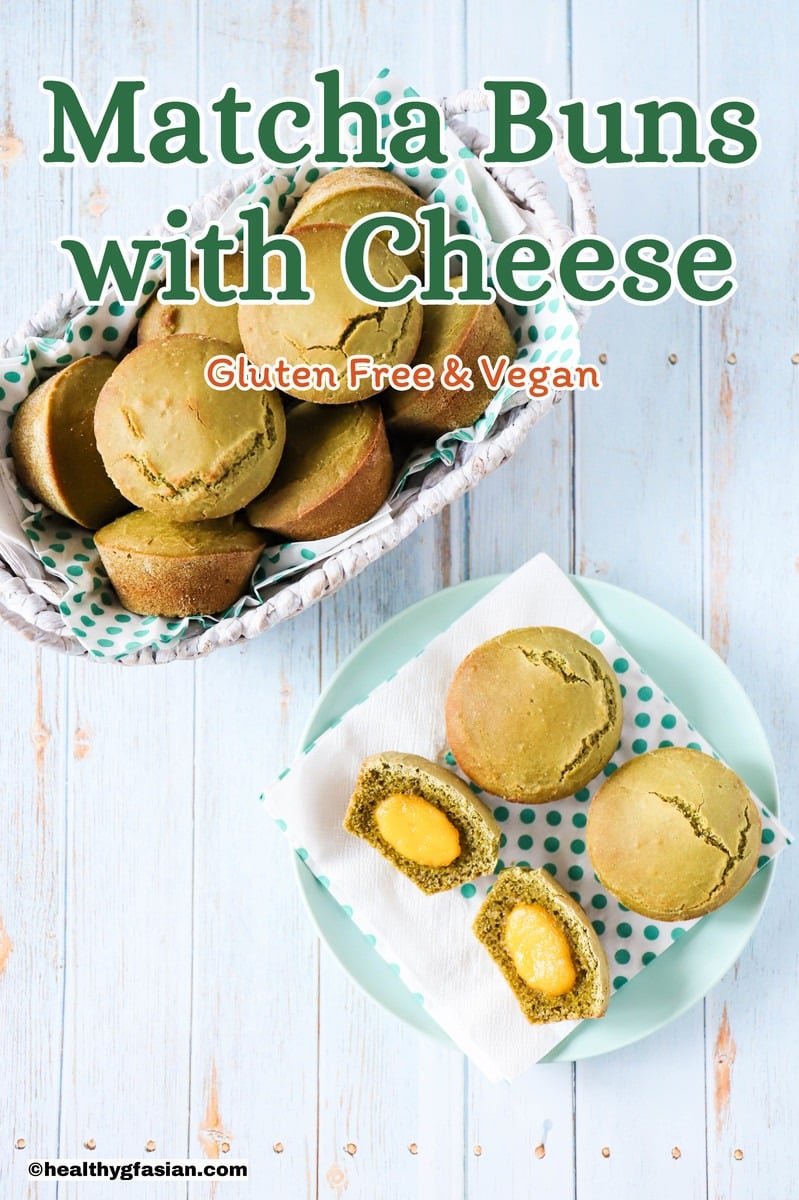
Gluten Free Bread Shops and Bakeries in Japan
As there are an increasing number of Japanese with food allergies especially wheat and also gluten intolerance. There are now a few gluten free specialty bakeries in Japan that make gluten free pure rice flour bread. They make these bread with 100% gluten free domestic Japanese rice flour from Niigata and Kumamoto. These type of domestic Japanese rice flour is the secret to Japanese soft and fluffy rice breads. Not the ordinary rice flour that we purchase from the supermarket and Asian groceries stores.
Other desserts available in these gluten free bakeries are rice flour cookies, muffins. Not forgetting Chiffon cakes with a wide range of flavours. These flavours include cocoa powder and chocolate, Earl Gray tea, strawberry and matcha and even mocha (chocolate and coffee). Two well-liked specialty gluten free bakeries popular in Tokyo, Japan are Beicon and Komehiro. Likewise they offer a range of gluten free pure rice flour bread free from wheat, eggs and milk. In addition, Otaco Sweets is a rice flour chiffon cake specialty store that is 100% gluten free bakery in Tokyo.
For history, nutritional values and health benefits of Matcha (green tea) powder. Remember to check out my post Vegan Matcha Buns with Raspberry Jam.
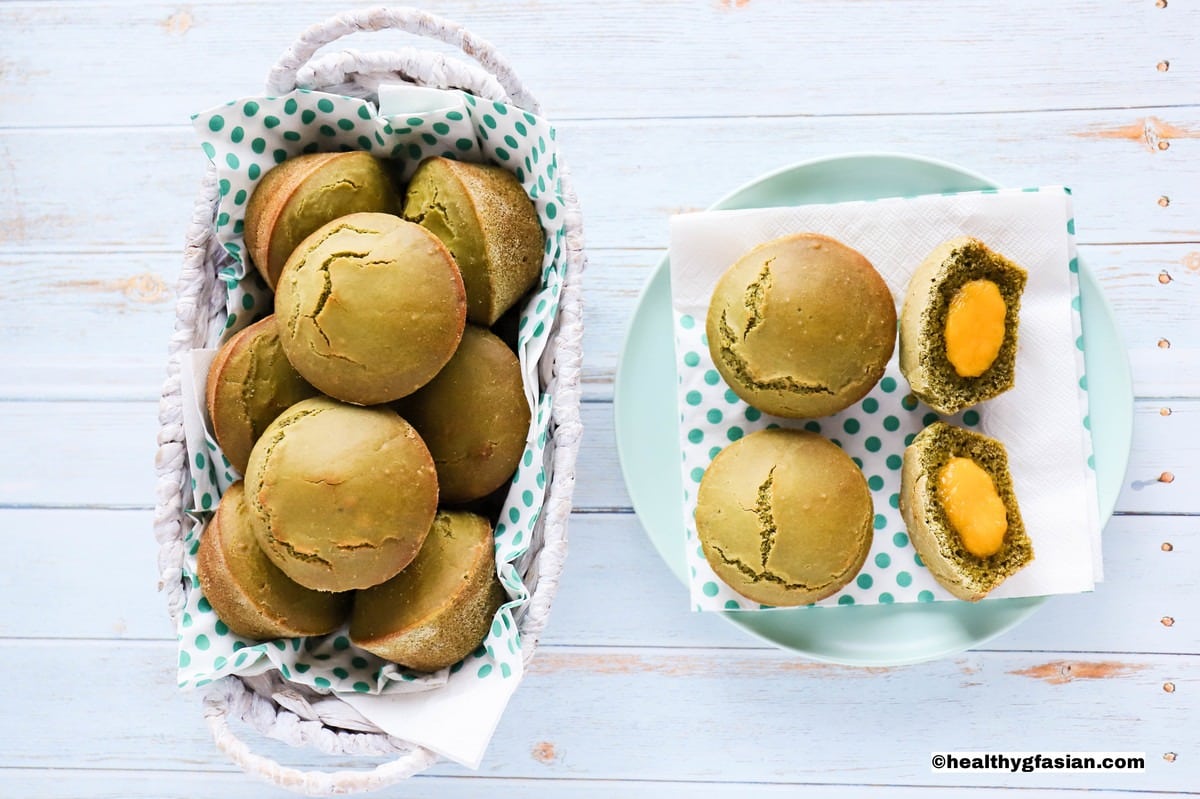
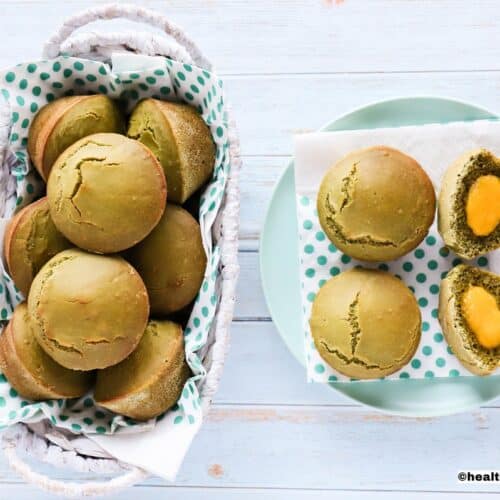
Matcha Buns with Cheese
Ingredients
- vegan butter for greasing the muffin pans
For the dough:
Dry Ingredients:
- 800 g gluten free white bread flour
- 1 tablespoon dry active yeast
- 4 tablespoons matcha powder
- ½ teaspoon salt
Wet Ingredients:
- 3 tablespoons extra virgin olive oil
- 4 tablespoons agave syrup
- 2 teaspoons vanilla extract
- 650 ml rice milk
For the Vegan Cheese Filling:
- 400 g vegan cheese
Instructions
For the vegan cheese filling:
- Cut the vegan cheese into smaller pieces if using cheese blocks or slices.
- Melt the vegan cheese using double boil method until all the cheese has melted. Set aside in the bowl in hot water bath to prevent cheese from hardening.
For preparing the dough:
- Warm the rice milk in a small pot for around 2 minutes, then turn off the heat. Add in the extra virgin olive oil and agave syrup and mix well.
- Using an electric stand mixer mixing bowl, add in all the dry ingredients including the yeast.
- Attach the mixing bowl to an electric stand mixer and then attach the dough hook. Using low speed, mix for about 30 seconds or until ingredients are well combined.
- Continue on low speed, gradually pour the warm rice milk mixture in step 1 into the well in the large bowl for about 2 minute.
- Stop mixing and then use a rubber spatula to scrape the sides and bottom of the mixing bowl.
- Mix on low setting for another 5 minutes or until dough is well combined.
For stuffing the dough:
- Lightly grease all the muffin cups with some vegan butter.
- Scoop and place small amount of wet dough into the bottom of each cup of the muffin pan (about ⅓ full).
- Then add 1 tablespoon of melted vegan cheese into the centre of each muffin cup.
- Fill each muffin cup with the rest of wet dough until nearly the edge. (about ¾ full).
- Let the dough rise for about 20 minutes.
For cooking the bun:
- Pre-heat fan-forced oven to 190C or 375F. Bake the buns for 15 minutes or until golden brown.
- Let the buns rest for 5 minutes. Then remove and place the cooked buns on a cooling rack.
- Reheat by covering the buns with aluminium paper and bake in the oven for 5 minutes or in microwave for 1 minute or until buns are just soft.
Recommended Products
Notes
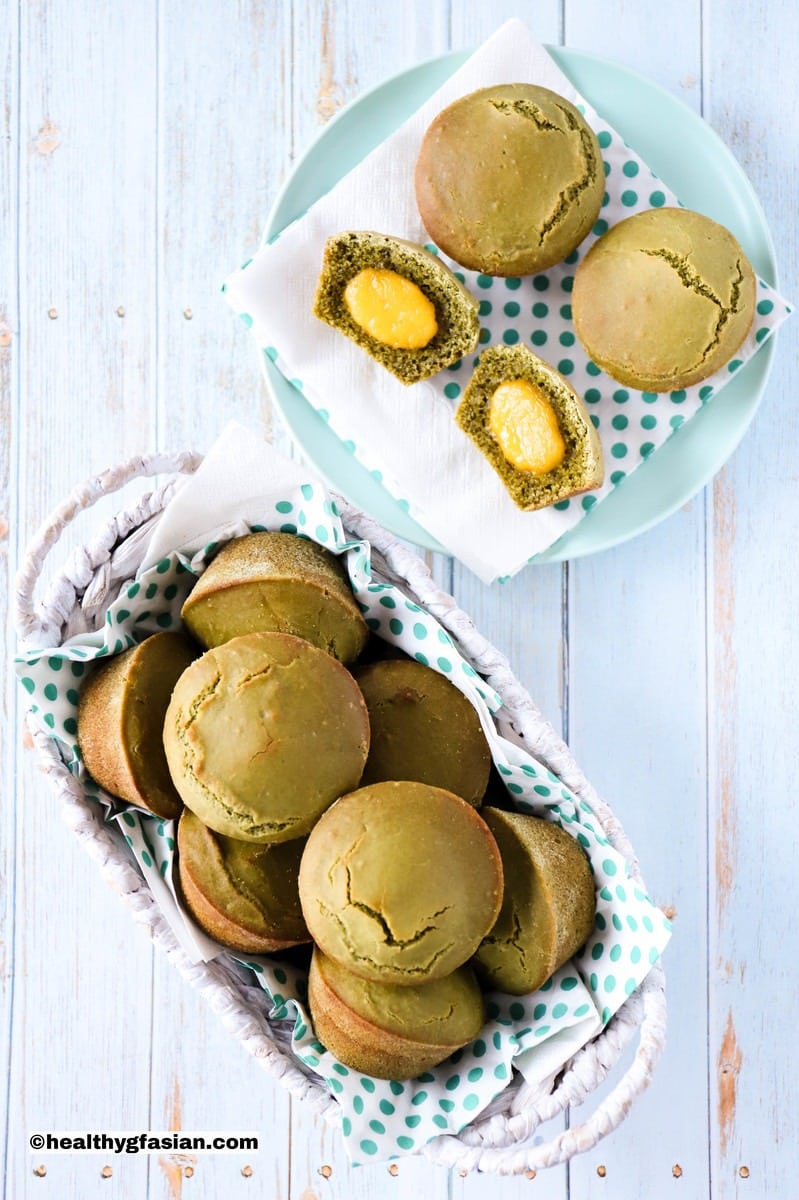
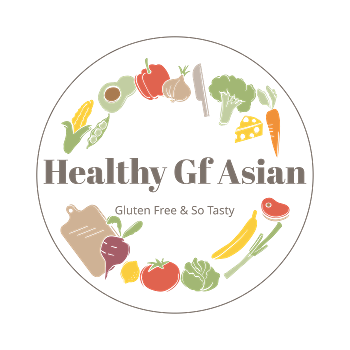





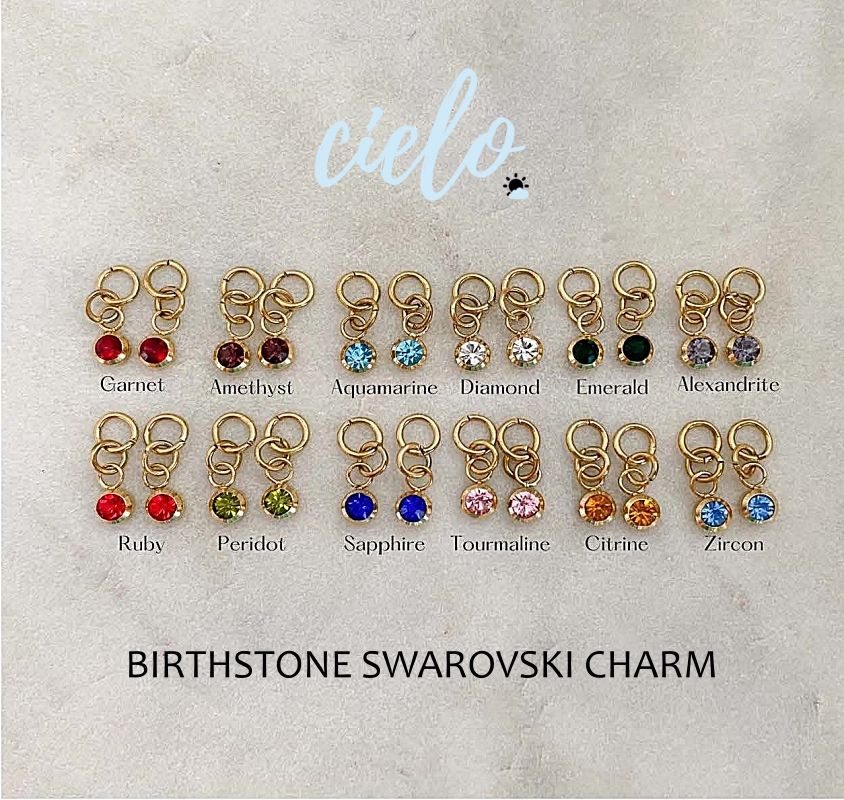
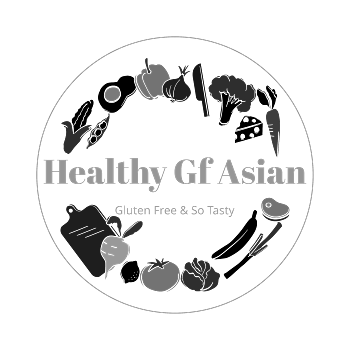
My daughter is a matcha fanatic. I’m amazed she didn’t turn green in Japan! LOL! I’m going to give this recipe a go. And yes, GMO crops scare the crap out of me. Its no wonder allergies have gone through the roof.
I love matcha too! Its not only very versatile in culinary uses, it is also packed full of nutritions.
Yes, GMO crops like wheat, corn, soybeans etc, are not really what they used to be, loaded with chemicals and leading to rapid rise in food allergies and food intolerances.
Hope both you and your daughter enjoy the recipe! 🙂